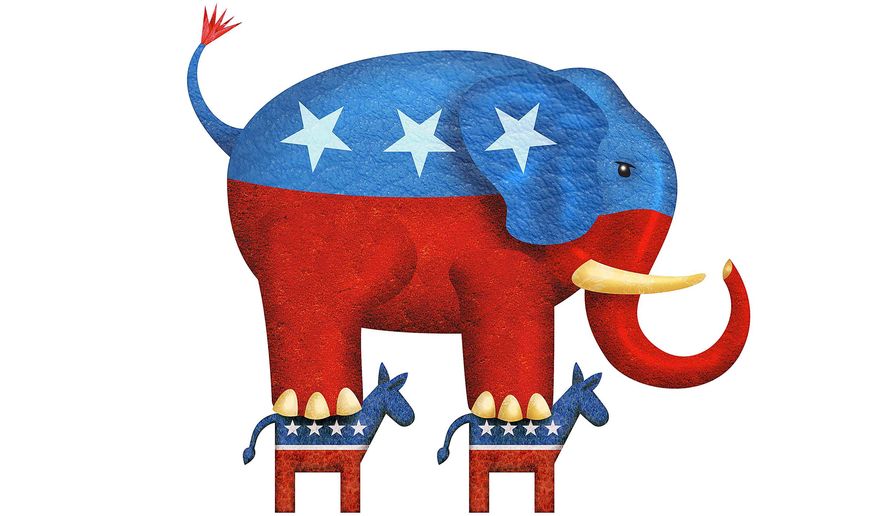The group devoted to electing Republicans in down-ballot and state legislative races said Thursday that with two newly announced state senate pickups in Maine and West Virginia, Republicans are on pace to control more chambers and more legislative seats than at any point in U.S. history after a successful midterm election performance.
The Republican State Leadership Committee (RSLC) said Thursday the GOP now controls 69 legislative chambers, 32 lieutenant governorships, and 29 secretaries of state.
“The key to our success this year was recruiting diverse candidates and women candidates who made the critical difference in chamber control in in key statewide races,” said RSLC President Matt Walter. “Before last night, the all-time Republican high was 64 chambers in 1920. Now, Republicans will hold a supermajority of legislative majorities, with GOP control in 69 chambers. We also appear on track to eclipse the all-time Republican high of 4,001 Republican state legislative seats held in 1928.”
The RSLC pointed to GOP pickups of state senate chambers in Colorado, Maine, and Nevada and outright majorities in the Washington state senate and New York state senate, which had been controlled by coalitions involving both parties.
The Charleston Daily Mail reported that a Democratic state senator’s planned party switch in West Virginia, coupled with Republicans’ gaining a majority in the state House, means the party will now control the legislature for the first time since the Great Depression.
Republicans also took control of the Minnesota House, Nevada Assembly, New Hampshire House, and New Mexico House.
Republicans added 675 seats in the 2010 GOP wave, bringing the total then to 3,944, with pre-election 2014 totals at 3,856 Republican seats to 3,448 Democrat-held ones.
Republicans managed to parlay their huge gains in 2010 in the often-overlooked down-ballot races, as well as in governorships, to hold outsize influence over the decennial redistricting process in many states, which helped cement the GOP’s already solid majority in the U.S. House of Representatives the party established through its performance in the 2010 midterms.
Democratic Legislative Campaign Committee (DLCC) Executive Director Michael Sargent said for their part, the group had its best fundraising year to date, recruited solid candidates and knocked on more doors than ever before, “but it just wasn’t enough to overcome the difficult political environment.”
“Since 2010, Democrats have faced an unfriendly map on both national and state levels, but our successful voter turnout efforts produced important gains in the North Carolina House and defended the Iowa Senate and Kentucky House,” he said.
“The DLCC takes the long view and we’ve got plans in place for the next cycle,” he added. “We remain committed to investing in Democratic candidates and caucuses as we get closer to the next round of redistricting. The fight for 2016 is underway.”
• David Sherfinski can be reached at dsherfinski@washingtontimes.com.




Please read our comment policy before commenting.